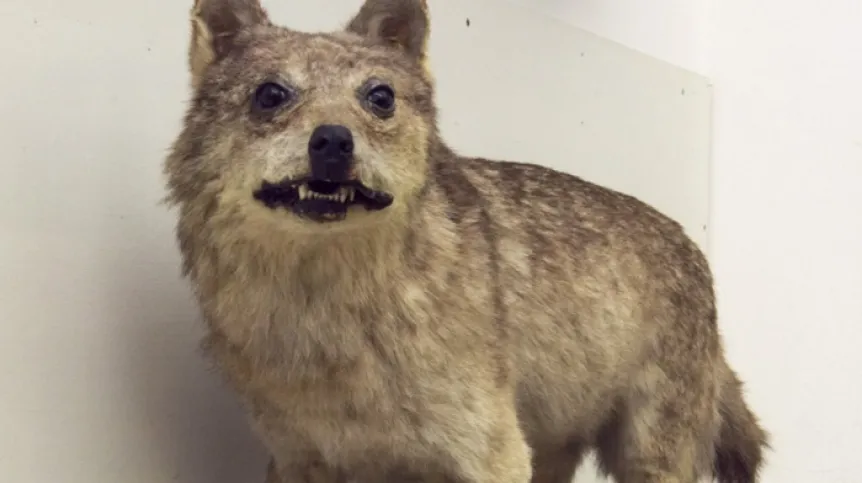
Only seven specimens of Sicilian wolves, extinct in the first half of the 20th century, remain in museum collections. An international team of scientists studying their DNA discovered the sad consequences of their isolation and persistent extermination.
The Apennine Peninsula is inhabited by a wolf subspecies bearing the scientific name Canis lupus italicus. But until recently, Sicily was home to another subspecies of this predator,Canis lupus cristaldii.
They were exterminated by humans in the first half of the 20th century and knowledge about them can now only be derived from the seven specimens preserved in museums.
The Sicilian wolves were distinguished by their small body size, light yellowish coat, and lack of the longitudinal dark stripes on the forelegs, common in Italian wolves. For years, questions were asked about the origin and history of the predators. The answer was provided by an international team of scientists, which also included researchers from Poland.
Scientists from the Center for Evolutionary Hologenomics at the University of Copenhagen in Denmark attempted to isolate genetic material from all available museum specimens of Sicilian wolves. They were able to obtain the nuclear genome of four individuals and the mitochondrial genome of five individuals. Then, in collaboration with several dozen other researchers, they compared them with the genomes of modern wolves inhabiting Eurasia and North America, as well as the genomes of modern and extinct dogs and extinct wolves inhabiting Siberia in the Pleistocene.
Their research showed that Sicilian wolves are most closely related to Italian wolves, but they remained isolated until the late Pleistocene (about 17,000 years ago). The consequence of the separation, as well as the population size reduction by humans, was the interbreeding of wolves in close kinship, and the resulting low genetic diversity of these predators.
Even worse, says Dr. Robert Mysłajek, a professor at the Faculty of Biology of the University of Warsaw and co-author of the study, people brought dogs to the island with them. Due to the shortage of mates of their own species, wolves began to interbreed with the dogs. Scientists have shown that in the genomes of wolves from Sicily there was a clear legacy of wolf-dog misalliances that probably took place as early as the Copper and Bronze Ages.
The results of the research are a valuable lesson, says the co-author of the publication in iScience (https://doi.org/10.1016/j.isci.2023.107307) ), Dr. Sabina Nowak, a professor at the Faculty of Biology of the University of Warsaw and president of the Association for Nature 'Wolf'.
It shows the possible consequences of the isolation of wild animal populations, as well as the threats posed by their extermination and the lack of control over the widespread presence of dogs in the natural environment. These dangers are also important for modern wolves, the scientist adds.
The research was co-financed by the Polish National Science Centre grants.
PAP - Science in Poland
tr. RL
zan/ kap/













